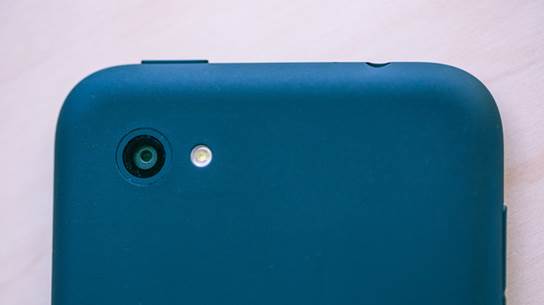Potential of Home
Will Home suit everyone? No, but Facebook
knows that not everyone who downloads the launcher or buys the First likes it.
However, what Home will have to do is to increase the network's branding
identity, improve its reputation on cell performance and attract more page
views than on any status updates shared on Facebook. It also enhances
motivation that the company expects to build in the smartphone world.
Zuckerberg does not have much to lose when doing this, even though the First
turns out to be a failure.
Will Home be successful? To answer that
question, let's divide into the groups to find out who might find it useful.
Most savvy users certainly will not use it much, unless their work focuses
mainly on Facebook - and even so, we have not found any way to integrate Pages
into Home at the time of launch. The widget lovers will soon be frustrated by
the lack of access capacity to their favorite widgets without jumping into the
inherent launcher each time.

What
Home will have to do is to increase the network's branding identity, improve
its reputation on cell performance and attract more page views than on any
status updates shared on Facebook.
The people who do not have Facebook
accounts or have small lists of friends will find that totally unprofitable, if
their eyes are not glassy as soon as they hear the name of the service. Those
who are addicted to Facebook - the heavy users - will not only like it but also
be the most vocal about receiving updates and new features. Those who often get
bored or are just trying to avoid reality at least will be relaxed by it, if
there is nothing else. Frankly speaking, Home will make Facebook enthusiasts
become the believers for the service; and it will not encourage people to
register for the service, it will be a failure in that sense. However, it can
turn ordinary users into those who like the Like, comments and regular posts,
and we have a feeling this is exactly the type of success that Facebook is
hoping to achieve.
For a 1.0 launch, Facebook Home is much
more subtle than we initially expected. It would not definitely be my selected
launcher, but I know that it can attract a crowd of loyal followers who are
monitoring. It's smooth, fast and visually appealing. It even sticks with some
of Android’s basic design elements. Regardless of the fact that some of the
gestures are not clear, the normal users will not take too long to learn. If
Facebook carries out its promise of new monthly updates and extends the range
of devices, Home could be viewed by more eyes than TouchWiz and Sense combined.
It is also said that the company can immediately attract more than a billion
users from the community - even if only a small percentage of them will
download Home and enthusiastically welcome it, it will justify the time and
effort that the company has put into the project. There are quite a lot of
potentials for Facebook to carry out this strategy, but it still has to play
the right cards.
Camera
There is nothing to write for the 5MP
camera on the First, and we are hoping to see something a little better on a
phone designed exclusively for Facebook. What do we mean by that? It must be
good enough to take steady pictures, but it's not worth much other than
shooting photos of friends during your latest adventure. While we want this
camera to be on par with the same standards we have on the HTC One - or any
other HTC devices featuring the imageCHIP – it does not have what it needs to
go further. On paper, the specs appear to be pretty good: the First’s rear
camera features an f/2 BSI Sensor, 28mm lens and 1,080p video recording. The
front-facing camera utilizes a 1.6MP BSI sensor with an ultra- wide angle lens.

The
First’s rear camera features an f/2 BSI Sensor, 28mm lens and 1,080p video
recording.
In terms of performance, the color shown on
the rear camera was extremely accurate, but all of the other aspects of the
module were under-standardized: low-light pictures were not commensurate with
the expectations set by the specifications; plenty of daylight pictures were
pale by soft focus and the level of detail was unsatisfactory. Again, we are
trying to remember that this particular device does not intend to take the lead
in performance, but we really hope to upload some particular pictures from the
First and share them through the Home. Unfortunately, this activity is kept to
a minimum.

The
front-facing camera utilizes a 1.6MP BSI sensor with an ultra- wide angle lens.
It is due to the fact that the First is a
vanilla Android device; the camera UI is also available. We have never really been
impressed with this particular interface, since it lacks plenty of the options
we have been expecting on the other devices. We could tap to focus and hold
down the shutter key to lock focus and exposure, and we were able to change the
white balance and exposure settings, but that was all. Since the First has
inability to quickly launch the camera application, it takes more time to take
photos than most other phones.
Unfortunately, it is the same with the
1,080p video: motion was choppy and it lacked so many significant details that
we wouldn’t have thought that it was HD quality. Even worse, the autofocus did
not seem to operate appropriately, as our videos were difficult to maintain
focus even when it was entirely standing still. In short, you will not want to
buy this phone because of the shooting experience.